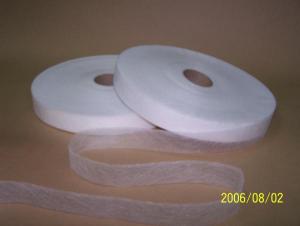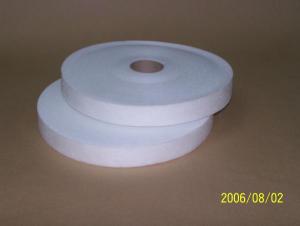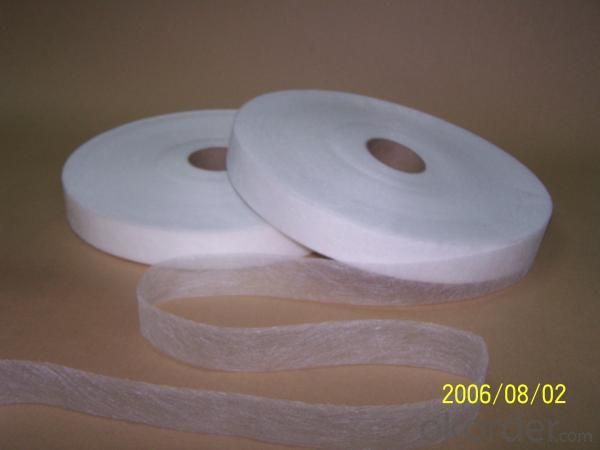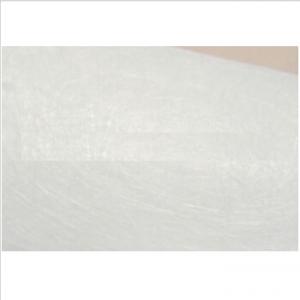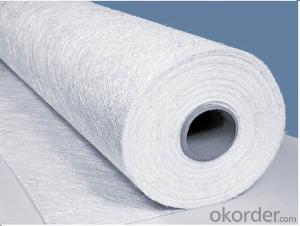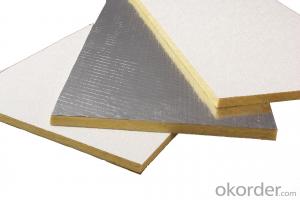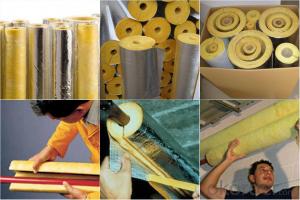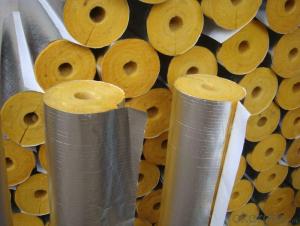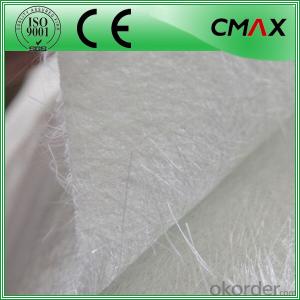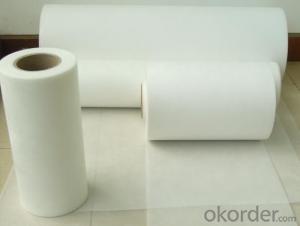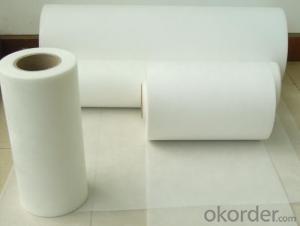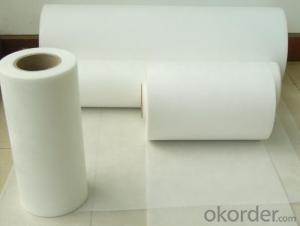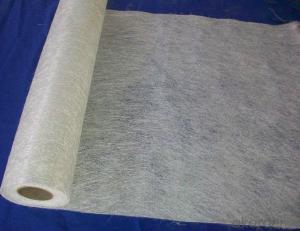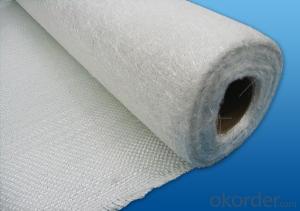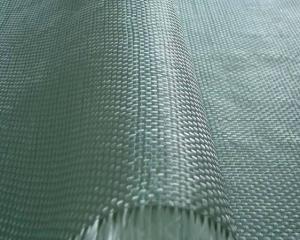Fiberglass Mat Tissue e-Glass Fiber Tissue Mat
- Loading Port:
- China Main Port
- Payment Terms:
- TT or LC
- Min Order Qty:
- 5000 Square Meter m²
- Supply Capability:
- 7000000 Square Meter m²/month
OKorder Service Pledge
OKorder Financial Service
You Might Also Like
Introduction of E-glass Fiber Tissue Mat
Fiberglass tissue Mat is mainly used for the surface layers of FRP products. It has good capability like fiber dispersion, smooth surface, low binder content, fast resin impregnation and good mould obedience. It is capable of significantly improving the strength of FRP surface layer, strong impaction resistance, excellent uniformity of surface, good covering up the texture of under layers and good corrosion resistance.
specification of E-glass Fiber Tissue Mat
Size: 20g/, 30g/, 35g/, etc.
Width: 50mm, 75mm, 100mm, 1000mm, etc.
Length: 400m, 500m, 1000m, etc.
All set of production lines are introduced from Germany.
Packaging & Delivery of E-glass Fiber Tissue Mat
Packaging Detail: carton & pallet
Delivery Detail: Within 15 days after confirm order
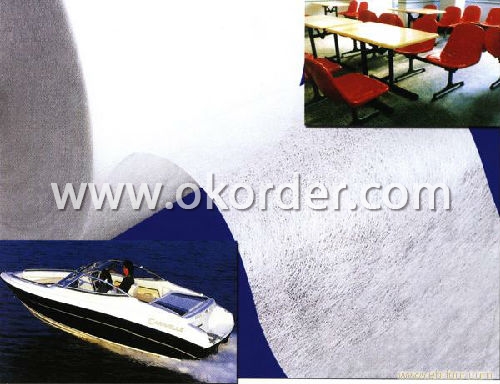
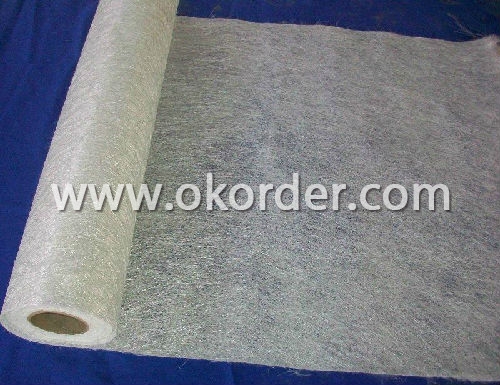
- Q: How does fiberglass mat tissue compare to other insulation materials?
- Fiberglass mat tissue, as an insulation material, offers numerous advantages over its counterparts. Primarily, it possesses exceptional thermal insulation properties, effectively preventing the transfer of heat and maintaining indoor temperatures at a comfortable level. This quality is particularly significant in extreme climates, where the building envelope may be susceptible to extreme cold or heat. Furthermore, fiberglass mat tissue exhibits resistance to moisture, mold, and mildew, which contributes to its longevity and durability as an insulation option. Its inability to absorb water prevents the growth of mold and the deterioration of the material over time. This attribute proves especially advantageous in areas with high humidity or a propensity for moisture accumulation, such as basements or bathrooms. In addition, fiberglass mat tissue is non-combustible and possesses a high fire resistance rating. Consequently, it serves as a safe choice for insulation, limiting the spread of flames in the event of a fire. It also acts as a barrier, impeding the fire from extending to other sections of the building and granting occupants valuable time for evacuation. Regarding installation, fiberglass mat tissue is relatively easy to handle and install. It can be conveniently cut to fit any desired shape or size, allowing for flexibility during the installation process. Its versatility is further evident in its applicability to walls, floors, ceilings, and roofs. Lastly, fiberglass mat tissue stands as an environmentally friendly option. It is manufactured from recycled glass and sand, reducing waste and conserving precious natural resources. Moreover, it remains recyclable at the conclusion of its lifespan, further minimizing its environmental impact. Overall, the exceptional thermal insulation properties, durability, moisture and fire resistance, ease of installation, and environmental sustainability of fiberglass mat tissue position it as a highly favorable choice in comparison to alternative insulation materials.
- Q: Can fiberglass mat tissue be used for pipe insulation?
- Yes, fiberglass mat tissue can be used for pipe insulation. It provides thermal insulation and can help prevent heat loss or gain in pipes. Additionally, it offers excellent resistance to moisture and corrosion, making it suitable for various pipe insulation applications.
- Q: What are the different reinforcement densities available for fiberglass mat tissue?
- The different reinforcement densities available for fiberglass mat tissue can vary depending on the specific manufacturer and product. However, common options include low density (lightweight), medium density, and high density fiberglass mat tissues. These densities are designed to provide different levels of strength, flexibility, and durability for various applications in industries such as construction, automotive, and marine.
- Q: How long does fiberglass mat tissue typically last?
- Fiberglass mat tissue typically lasts for many years, as it is a durable material that is designed to withstand harsh environmental conditions and maintain its strength and integrity over time.
- Q: Does fiberglass mat tissue provide any sound insulation?
- Yes, fiberglass mat tissue does provide sound insulation. It is a common material used in various industries, including construction and automotive, to absorb and reduce sound transmission. The fibrous structure of the material helps to trap and absorb sound waves, preventing them from passing through walls or other surfaces. Fiberglass mat tissue is often used as an acoustic insulation material in walls, floors, and ceilings to create a more comfortable and noise-free environment.
- Q: What is the shelf life of fiberglass mat tissue?
- The duration for which fiberglass mat tissue remains usable can differ based on various factors, including how it is stored, its packaging, and the recommendations of the specific manufacturer. In general, if stored in a cool and dry location without being opened, fiberglass mat tissue can maintain its quality for approximately one to two years. However, it is crucial to be aware that the material may deteriorate or lose its physical characteristics over time, which can impact its effectiveness and suitability for use. Consequently, it is recommended to consistently refer to the manufacturer's instructions or directly consult with them for the most precise information concerning the shelf life of a particular fiberglass mat tissue product.
- Q: Can fiberglass mat tissue be used for repairing fiberglass tanks?
- Yes, fiberglass mat tissue can be used for repairing fiberglass tanks. Fiberglass mat tissue is a thin, flexible material that is commonly used in the construction and repair of fiberglass products. It is designed to provide reinforcement and strength to the repaired areas. When applied with an appropriate resin, fiberglass mat tissue can effectively repair cracks, holes, or damaged sections of fiberglass tanks. However, it is important to ensure that the repair is done in a proper and professional manner, following the manufacturer's instructions and guidelines. Additionally, it is recommended to consult with an expert or specialist in fiberglass repair to ensure the best possible outcome for the repair.
- Q: Can fiberglass mat tissue be used for making lightweight furniture?
- Fiberglass mat tissue has the capability to create lightweight furniture. This material is composed of glass fibers bonded with resin, resulting in a thin and light substance. Its exceptional strength-to-weight ratio has made it widely used in different industries such as automotive, aerospace, and construction. In furniture production, fiberglass mat tissue can be layered and shaped into various forms, providing both structural support and rigidity while keeping the weight of the furniture low. This makes it an excellent choice for crafting lightweight furniture pieces that are easy to move and transport. Furthermore, fiberglass mat tissue exhibits impressive durability and resistance to moisture, chemicals, and heat, making it suitable for indoor and outdoor furniture applications. Its versatility empowers furniture designers and manufacturers to create innovative and distinctive designs while maintaining the desired lightweight characteristics. However, it is crucial to consider that the quality and performance of the final product also rely on the overall design, construction, and other materials used in conjunction with fiberglass mat tissue. To ensure the furniture's longevity, stability, and safety, proper engineering and manufacturing techniques should be applied.
- Q: How does the fiber orientation of fiberglass mat tissue affect its strength?
- The fiber orientation of fiberglass mat tissue greatly affects its strength. When the fibers are aligned in a specific direction, they provide maximum strength in that direction. However, if the fibers are randomly oriented, the overall strength of the material is reduced as the load may not be evenly distributed among the fibers. Therefore, proper fiber orientation is crucial in maximizing the strength of fiberglass mat tissue.
- Q: What is the weight of fiberglass mat tissue per square meter?
- The weight of fiberglass mat tissue per square meter can vary depending on the specific product and manufacturer. However, on average, fiberglass mat tissue typically weighs around 100-300 grams per square meter.
1. Manufacturer Overview
| Location | Hebei,China |
| Year Established | 2008 |
| Annual Output Value | Above US$20 Million |
| Main Markets | Mid East;Western Europe:South Asian |
| Company Certifications | ISO9001:2000;ISO14001:1996;GB/T28001:2001 |
2. Manufacturer Certificates
| a) Certification Name | |
| Range | |
| Reference | |
| Validity Period |
3. Manufacturer Capability
| a) Trade Capacity | |
| Nearest Port | Tianjin |
| Export Percentage | 80% |
| No.of Employees in Trade Department | 350 People |
| Language Spoken: | English;Chinese;Korean |
| b) Factory Information | |
| Factory Size: | Above 100,000 square meters |
| No. of Production Lines | Above 12 |
| Contract Manufacturing | OEM Service Offered;Design Service Offered |
| Product Price Range | Average |
Send your message to us
Fiberglass Mat Tissue e-Glass Fiber Tissue Mat
- Loading Port:
- China Main Port
- Payment Terms:
- TT or LC
- Min Order Qty:
- 5000 Square Meter m²
- Supply Capability:
- 7000000 Square Meter m²/month
OKorder Service Pledge
OKorder Financial Service
Similar products
Hot products
Hot Searches
Related keywords
